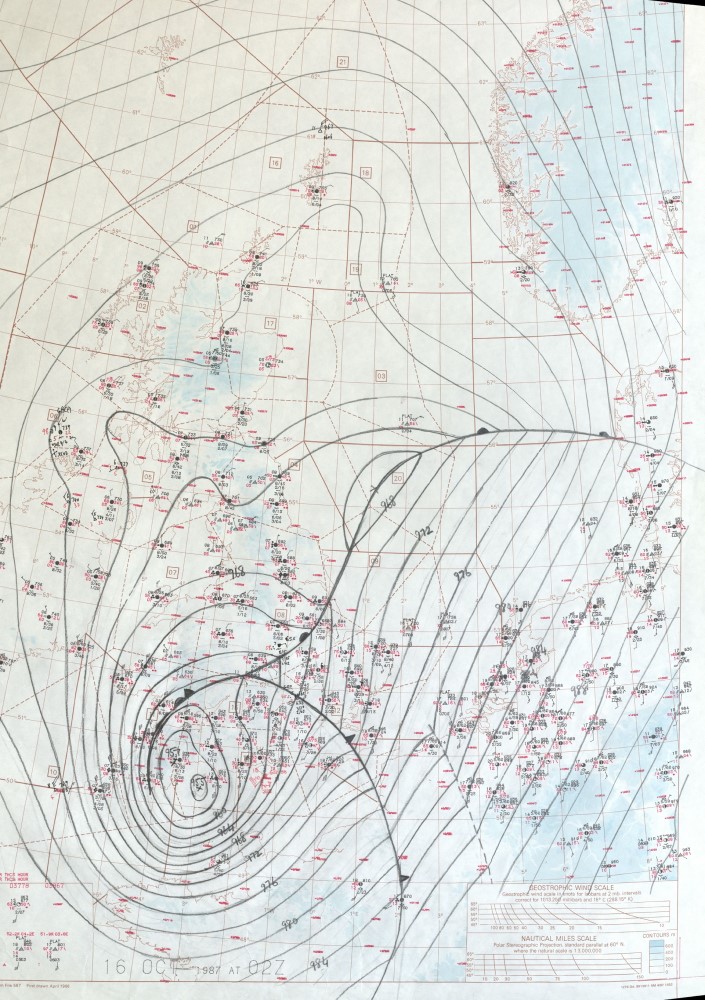30th Anniversary of the 1987 Storm
Author: Press Office
11:30 (UTC+1) on Wed 11 Oct 2017
While the ‘Great Storm’ of 15 and 16 October 1987 is still one of the most talked about weather events in living memory it was also a wake-up call for the Met Office and other organisations.
The 1987 storm helped identify gaps in severe weather forecasting capability and highlighted the need for better communication with partner organisations such as emergency services and the public in general.
Bringing wind gusts in excess of 100 mph the storm resulted in the loss of 22 lives, around £1 billion worth of damage and there was widespread disruption across southern England. It has gone down in history as one of the worst UK storms since 1703 and will obviously be remembered for Michael Fish’s now famous television broadcast.
Over the last 30 years there have been many major developments and changes in the way weather forecasts are produced. There have also been changes in how they are communicated and therefore in how people respond.

Weather chart from 3am Oct 16 1987
Met Office meteorologist and Senior Presenter Alex Deakin said: “In 1987 people received their forecasts either via newspapers or at fixed times on TV and radio. Now over 90% of adults consult forecasts via social media, websites or mobile apps. A forecast is now available whenever you want and information about up and coming storms can be accessed in seconds.”
Forecasting the development and behaviour of this type of storm remains challenging, however the resolution (the spacing between grid points) of our global computer model is now 10 km compared to 150 km in 1987 and our UK model is 1.5 km compared to 75 km. This is crucial to successfully predicting where and how the weather will impact the UK.
These improvements, together with better observations mean we are now able to provide earlier and more accurate forecasts and warnings of this type of storm. Our four day forecast is now as accurate as our one day forecast was at the time of the Great Storm.

We have a track record of continually improving performance and innovative science. The recent investment in the new supercomputer allows us to improve the pull through of science into operational services delivering wide ranging improvements, particularly to the resolution of models.
The three tier National Severe Weather Warning Service was in introduced following the investigation into the storm and now informs Government, civil contingency stakeholders, emergency responders and the public of the risks of severe weather.
We continue to work hard to ensure that the weather message reaches the people that it affects. One of our latest innovations has been the naming of storms, first introduced in 2015. This pilot scheme has been well received by the public, raising awareness of severe weather and helping highlight the potential dangers and impacts of storms crossing the UK and Ireland. Names also make it easier to follow a storms’ progress via TV, radio, the internet or social media.
We can’t say we won’t see another storm like the one in 1987, but we are able to better forecast and warn of severe weather, helping to minimise the impacts by working with our partners and emergency responders, and the general public to prepare and take action all helping to protect life and property in the future.


